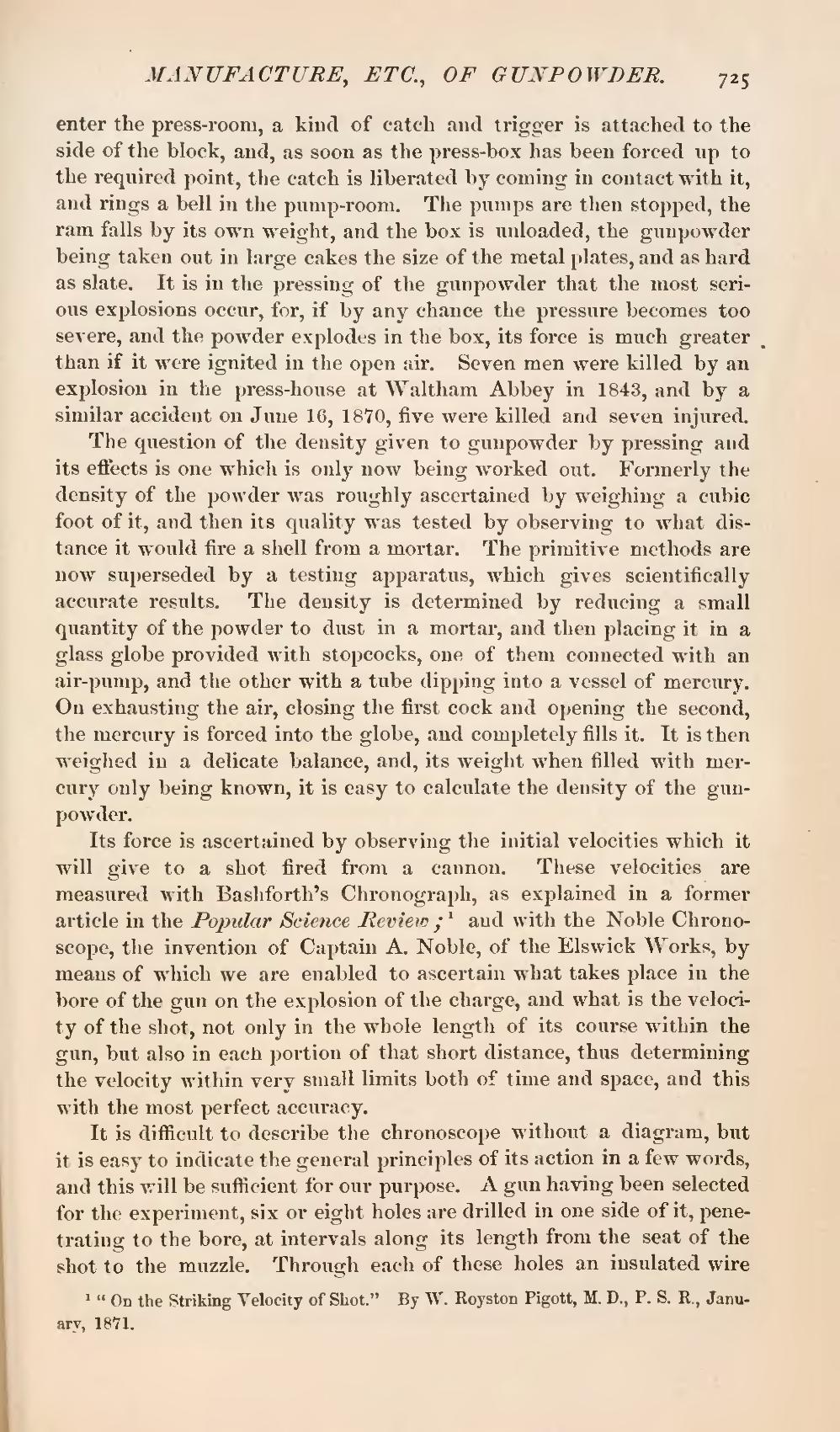enter the press-room, a kind of catch and trigger is attached to the side of the block, and, as soon as the press-box has been forced up to the required point, the catch is liberated by coming in contact with it, and rings a bell in the pump-room. The pumps are then stopped, the ram falls by its own weight, and the box is unloaded, the gunpowder being taken out in large cakes the size of the metal plates, and as hard as slate. It is in the pressing of the gunpowder that the most serious explosions occur, for, if by any chance the pressure becomes too severe, and the powder explodes in the box, its force is much greater than if it were ignited in the open air. Seven men were killed by an explosion in the press-house at Waltham Abbey in 1843, and by a similar accident on June 16, 1870, five were killed and seven injured.
The question of the density given to gunpowder by pressing and its effects is one which is only now being worked out. Formerly the density of the powder was roughly ascertained by weighing a cubic foot of it, and then its quality was tested by observing to what distance it would fire a shell from a mortar. The primitive methods are now superseded by a testing apparatus, which gives scientifically accurate results. The density is determined by reducing a small quantity of the powder to dust in a mortar, and then placing it in a glass globe provided with stopcocks, one of them connected with an air-pump, and the other with a tube dipping into a vessel of mercury. On exhausting the air, closing the first cock and opening the second, the mercury is forced into the globe, and completely fills it. It is then weighed in a delicate balance, and, its weight when filled with mercury only being known, it is easy to calculate the density of the gunpowder.
Its force is ascertained by observing the initial velocities which it will give to a shot fired from a cannon. These velocities are measured with Bashforth's Chronograph, as explained in a former article in the Popular Science Review;[1] and with the Noble Chronoscope, the invention of Captain A. Noble, of the Elswick Works, by means of which we are enabled to ascertain what takes place in the bore of the gun on the explosion of the charge, and what is the velocity of the shot, not only in the whole length of its course within the gun, but also in each portion of that short distance, thus determining the velocity within very small limits both of time and space, and this with the most perfect accuracy.
It is difficult to describe the chronoscope without a diagram, but it is easy to indicate the general principles of its action in a few words, and this will be sufficient for our purpose. A gun having been selected for the experiment, six or eight holes are drilled in one side of it, penetrating to the bore, at intervals along its length from the seat of the shot to the muzzle. Through each of these holes an insulated wire
- ↑ "On the Striking Velocity of Shot." By W. Royston Pigott, M. D., P. S. R., January, 1871.
